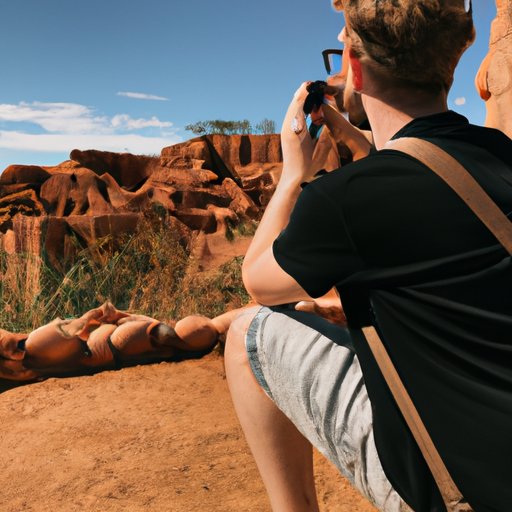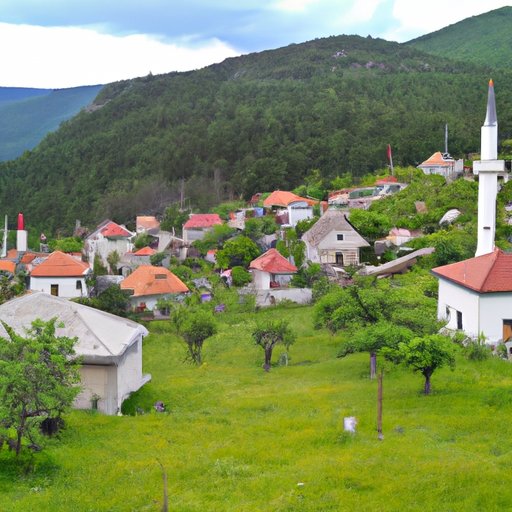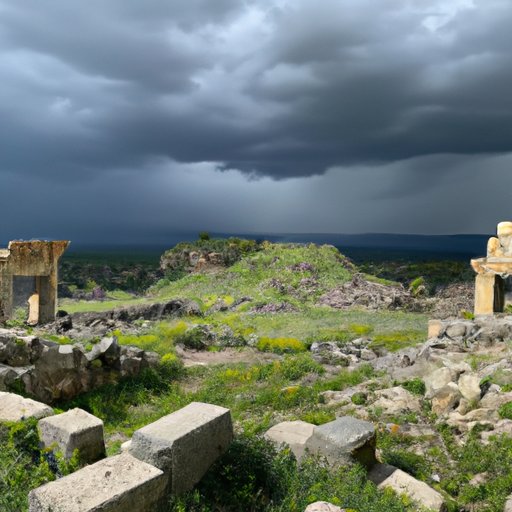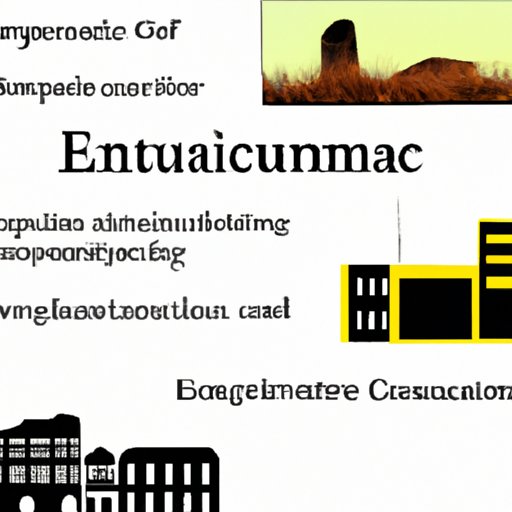Introduction
A cultural landscape is defined by the United Nations Educational, Scientific and Cultural Organization (UNESCO) as “the combined works of nature and man that express a long and intimate relationship between people and their environment.” A cultural landscape typically consists of natural elements such as landforms, vegetation, and wildlife, as well as man-made features such as buildings, roads, and monuments. These landscapes are often reflective of the cultures of the region, with each culture having its own unique way of shaping and interacting with the environment.
The preservation of cultural landscapes is of great importance, as these landscapes can provide valuable insights into the history and evolution of different cultures. Furthermore, preserving cultural landscapes is essential for protecting the natural environment, as well as ensuring the survival of cultural heritage.

Examining Examples of Cultural Landscapes Around the World
Cultural landscapes can be found all around the world, with each region having its own unique take on the concept. For example, in Europe, cultural landscapes have been shaped by centuries of agricultural practices, resulting in a patchwork of fields, forests, rivers, and villages. In the Middle East, cultural landscapes often feature ancient ruins, while in Latin America, they are characterized by indigenous settlements, terraced hillsides, and tropical rainforests.
These cultural landscapes often reflect the cultures of the region, providing insight into the values and beliefs of the people who inhabit them. For example, in some parts of Africa, traditional villages are built on stilts, reflecting the importance of water in the local culture. Similarly, in Japan, Shinto shrines are often built on mountains, reflecting the reverence for nature in the culture.
Investigating the History and Evolution of Cultural Landscapes
Cultural landscapes have evolved over time, with different cultures leaving their mark on the landscape. For example, in the United States, European settlers transformed the landscape, introducing new plants, animals, and technologies. In some cases, these changes were beneficial, such as when settlers introduced wheat farming to the Great Plains, leading to increased productivity and economic growth. However, in other cases, these changes had negative impacts, such as when settlers introduced invasive species or destroyed native habitats.
In addition to changes made by settlers, cultural landscapes are also affected by more recent developments, such as urbanization and industrialization. According to a study published in the journal Environmental Science & Technology, urbanization has had a significant impact on cultural landscapes, with cities covering up to 60 percent of the total land area in some parts of the world. Industrialization has also had an effect, with factories and power plants altering the physical and chemical properties of the surrounding environment.

How Cultural Landscapes are Used Today
Today, cultural landscapes are used in a variety of ways, ranging from recreation and tourism to scientific research and conservation. They provide recreational opportunities such as hiking and camping, as well as educational experiences, allowing visitors to learn about the history and culture of the region. In addition, cultural landscapes are often used as a form of ecotourism, allowing visitors to experience the natural beauty of the region without damaging it.
Tourism can also have a negative impact on cultural landscapes, especially if it is not managed properly. Uncontrolled tourism can lead to overcrowding, pollution, and damage to the environment, as well as the loss of cultural heritage. To prevent this, it is important for governments and communities to develop sustainable tourism management plans that take into account the needs of both local communities and visitors.

Highlighting the Threats to Cultural Landscapes and How to Protect Them
Cultural landscapes face a number of threats, including climate change, urbanization, and economic development. Climate change can cause extreme weather events such as floods and droughts, which can have devastating effects on cultural landscapes. Urbanization can lead to the destruction of cultural heritage, while economic development projects may interfere with the traditional use of the land.
To protect cultural landscapes, it is important to recognize their value and create policies and regulations that ensure their protection. This includes developing sustainable management plans, conserving natural resources, and promoting public education and awareness of the importance of cultural landscapes. Additionally, it is important to involve local communities in the decision-making process, as they are often the ones most affected by changes to the landscape.
Conclusion
Cultural landscapes are a valuable part of our global heritage, providing insight into the history and evolution of different cultures. These landscapes are often reflective of the cultures of the region, and can provide recreational and educational opportunities for visitors. However, cultural landscapes are under threat from climate change, urbanization, and economic development, and it is important to take steps to protect them. By recognizing their value and creating policies and regulations to ensure their protection, we can ensure the preservation of these unique and irreplaceable landscapes.
(Note: Is this article not meeting your expectations? Do you have knowledge or insights to share? Unlock new opportunities and expand your reach by joining our authors team. Click Registration to join us and share your expertise with our readers.)
